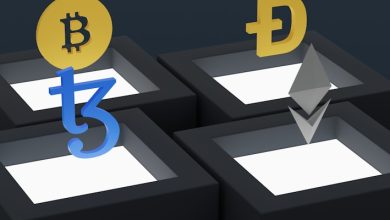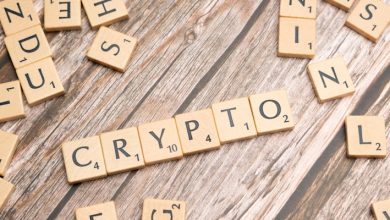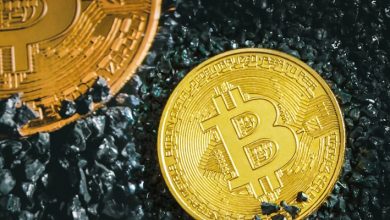The Role of NFTs in the Digital Economy: A Beginner’s Guide

- Understanding NFTs: What are they and how do they work?
- Exploring the impact of NFTs on digital ownership and authenticity
- The rise of NFT marketplaces: Where to buy, sell, and trade digital assets
- NFTs and the art world: Revolutionizing the way we view and collect art
- Navigating the legal and ethical considerations of NFTs
- The future of NFTs: Potential challenges and opportunities ahead
Understanding NFTs: What are they and how do they work?
NFTs, or Non-Fungible Tokens, have gained significant popularity in recent years as a unique form of digital asset. These tokens are built on blockchain technology, which ensures their uniqueness and authenticity. Unlike cryptocurrencies like Bitcoin or Ethereum, which are fungible and can be exchanged on a one-to-one basis, NFTs are one-of-a-kind assets that cannot be replicated.
NFTs work by using smart contracts to establish ownership and provenance of digital assets, such as art, music, videos, and even virtual real estate. Each NFT contains metadata that describes the asset it represents, including details like the creator, creation date, and any associated royalties. This information is stored on the blockchain, making it immutable and transparent.
When someone purchases an NFT, they are essentially buying a certificate of ownership for the digital asset it represents. This ownership is recorded on the blockchain, allowing for easy verification and transfer of ownership. NFTs have opened up new opportunities for creators to monetize their work and for collectors to own unique digital assets.
Overall, NFTs have the potential to revolutionize the way we buy, sell, and collect digital assets. As the digital economy continues to grow, NFTs offer a new way for creators and collectors to interact with digital content. Understanding how NFTs work and their role in the digital economy is crucial for anyone looking to participate in this emerging market.
Exploring the impact of NFTs on digital ownership and authenticity
NFTs have revolutionized the concept of digital ownership by allowing individuals to purchase unique digital assets on the blockchain. This has significant implications for the art and collectibles market, where authenticity and provenance are crucial. NFTs provide a secure and transparent way for creators to verify the authenticity of their work and for buyers to prove ownership.
One of the key advantages of NFTs is that they cannot be replicated or counterfeited, providing a level of security and trust that is often lacking in the digital space. This has led to a surge in interest from artists, musicians, and other creators looking to monetize their work in a new and innovative way. By tokenizing their creations, they can establish a direct relationship with their audience and ensure that they receive fair compensation for their efforts.
Furthermore, NFTs have the potential to democratize the art world by allowing anyone to invest in and own digital assets. This opens up new opportunities for artists who may have previously struggled to gain recognition in traditional art markets. It also challenges the traditional gatekeepers of the art world, giving artists more control over their work and how it is distributed.
Overall, NFTs represent a significant shift in how we perceive and interact with digital assets. They have the potential to transform the way we think about ownership and authenticity in the digital economy, creating new opportunities for creators and collectors alike. As the technology continues to evolve, it will be fascinating to see how NFTs shape the future of the digital landscape.
The rise of NFT marketplaces: Where to buy, sell, and trade digital assets
The rise of NFT marketplaces has been a significant development in the digital economy, providing a platform for individuals to buy, sell, and trade digital assets. These marketplaces have opened up new opportunities for creators and collectors alike, allowing them to monetize their work and expand their collections.
When it comes to buying, selling, or trading NFTs, there are several platforms that have emerged as popular choices for users. These marketplaces offer a range of features and services to cater to different needs and preferences. Here are some of the top NFT marketplaces where you can engage in digital asset transactions:
- OpenSea: One of the largest and most well-known NFT marketplaces, OpenSea offers a wide variety of digital assets for sale, including art, collectibles, and virtual real estate.
- Rarible: Rarible is a decentralized NFT marketplace that allows users to create, buy, and sell digital collectibles using blockchain technology.
- Foundation: Foundation is a curated NFT marketplace that focuses on supporting artists and creators by providing a platform for them to showcase and sell their work.
- SuperRare: SuperRare is a marketplace for rare and exclusive digital art, offering a selection of high-quality NFTs from leading artists in the space.
These marketplaces have become key players in the NFT ecosystem, providing a space for creators to showcase their work and for collectors to acquire unique digital assets. As the popularity of NFTs continues to grow, these platforms are likely to play an increasingly important role in shaping the digital economy.
NFTs and the art world: Revolutionizing the way we view and collect art
NFTs are transforming the art world by revolutionizing the way art is viewed and collected. These digital assets are changing the traditional art market, offering new opportunities for artists and collectors alike.
One of the key benefits of NFTs in the art world is the ability to authenticate and verify the ownership of digital artworks. This provides a level of transparency and security that was previously not possible with physical art pieces.
Furthermore, NFTs allow artists to reach a global audience without the need for intermediaries such as galleries or auction houses. This democratization of the art market enables artists to have more control over their work and its distribution.
Collectors are also drawn to NFTs because of the unique ownership rights they offer. By purchasing an NFT, collectors gain exclusive access to the digital artwork and can prove ownership through blockchain technology.
Overall, NFTs are reshaping the art world by providing a new way to create, buy, and sell digital art. As this technology continues to evolve, it will be fascinating to see how it impacts the future of the art market.
Navigating the legal and ethical considerations of NFTs
Navigating the legal and ethical considerations of NFTs can be a complex task for newcomers to the digital economy. It is essential to understand the various laws and regulations that govern the creation, sale, and ownership of non-fungible tokens. Additionally, ethical considerations such as copyright infringement and intellectual property rights must be taken into account when dealing with NFTs.
One of the key legal considerations surrounding NFTs is the issue of ownership. Unlike physical assets, NFTs exist in the digital realm, which can complicate matters when it comes to determining who owns a particular token. This has led to disputes over the rightful ownership of NFTs, with some cases ending up in court.
Another legal consideration is the potential for fraud in the NFT market. Due to the anonymous nature of blockchain transactions, it can be challenging to verify the authenticity of an NFT or the identity of the seller. This has led to instances of fake NFTs being sold to unsuspecting buyers, highlighting the need for increased regulation in the industry.
Ethical considerations also play a significant role in the world of NFTs. Artists and creators must consider the implications of tokenizing their work, as it can impact their reputation and brand. Additionally, buyers must be aware of the ethical implications of purchasing NFTs, especially if they are from controversial or questionable sources.
In conclusion, navigating the legal and ethical considerations of NFTs requires a thorough understanding of the laws and regulations that govern the digital economy. By staying informed and being aware of potential risks, both buyers and sellers can participate in the NFT market responsibly and ethically.
The future of NFTs: Potential challenges and opportunities ahead
The future of non-fungible tokens (NFTs) is filled with both potential challenges and opportunities that lie ahead. As this digital asset continues to gain popularity in the digital economy, it is essential to consider the various factors that may impact its growth and adoption.
One potential challenge that NFTs may face in the future is the issue of scalability. As more individuals and businesses begin to use NFTs for various purposes, such as digital art, collectibles, and even real estate, the demand for these tokens could potentially exceed the current infrastructure’s capacity. This could lead to slower transaction times and higher fees, which may hinder widespread adoption.
On the other hand, the future of NFTs also presents numerous opportunities for growth and innovation. As more industries explore the potential applications of NFTs, we may see new use cases emerge that could revolutionize how we think about ownership and digital assets. Additionally, advancements in blockchain technology could help address scalability issues, making NFTs more accessible and cost-effective for users.



